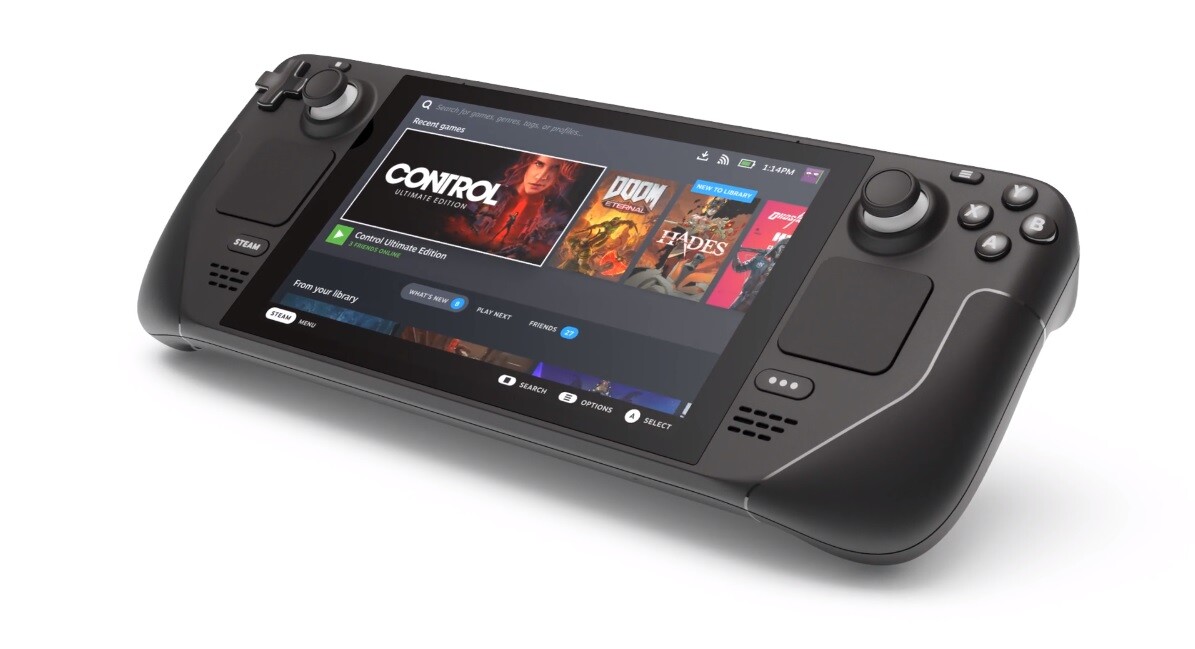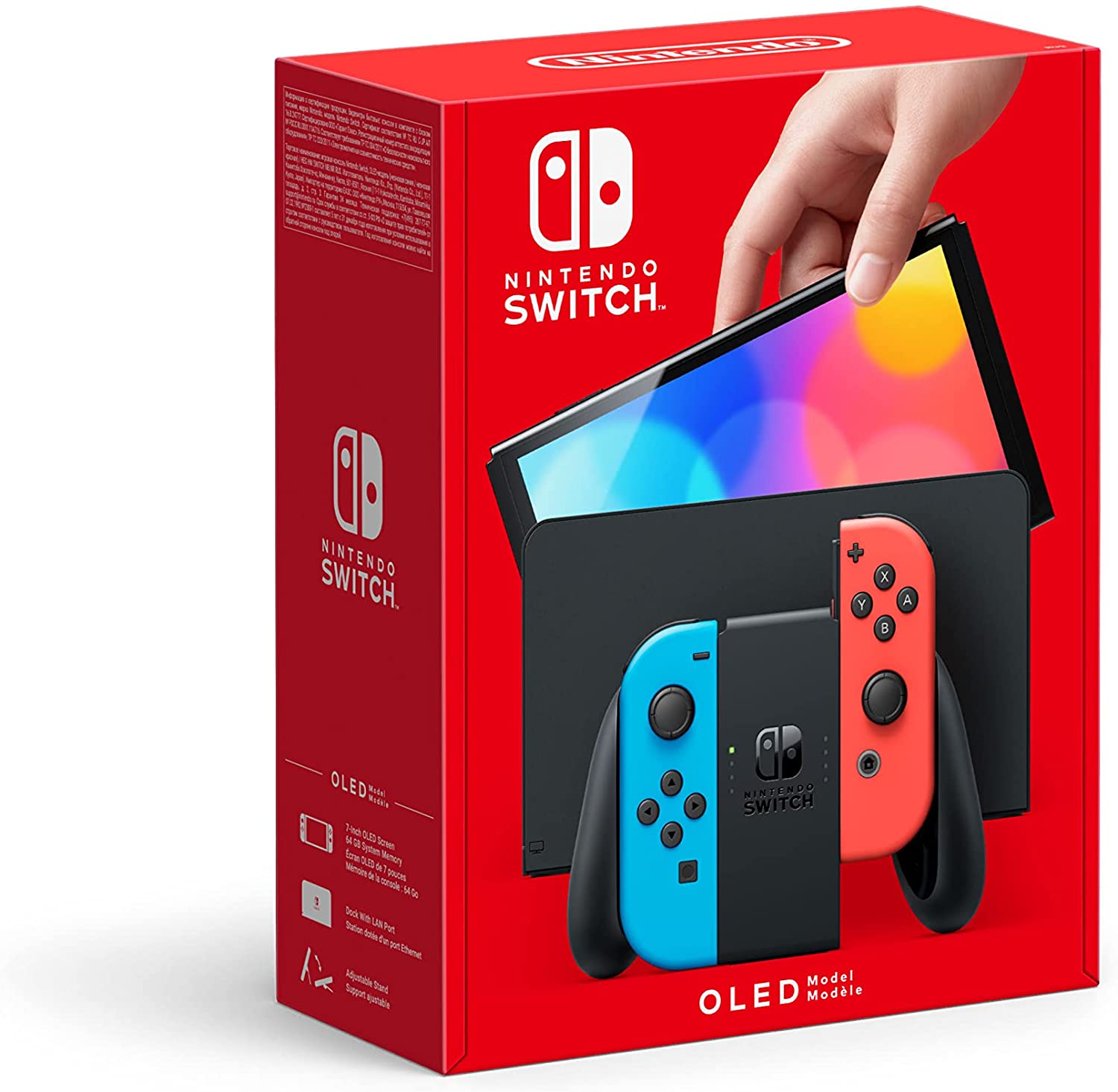|
Our favourite! Steam Deck
Screen: 7 inches |
The most sold! Switch OLED
Screen: 7 inches |
It is a good time to be a gamer, the best without a doubt and surely in the coming years things will get better. One of the greatest pleasures that a video game lover can enjoy is, without a doubt, the option to play anywhere: be it on the bus, in line at the bank or on a plane.
Let’s face it, portable consoles are pretty cool. Until recently, Nintendo dominated the portable console sector, becoming a reference. All gamers who wanted to enjoy the portable, had to go through the hoop and get a Nintendo Switch.
But those times are over. The Steam platform (known by members of the pc master race ) has launched the Steam Deck, a powerful portable console that has its strong points in its catalog and its features. This console comes to compete with the Nintendo Switch OLED, the option that continues to be preferred by the vast majority of users.
Spectacular performance, lightness, maximum portability… but which one to choose today? We are going to analyze the main characteristics of each console so that you can make the best decision.
Steam Deck vs. Nintendo Switch OLED – Comparison Table
In the following table you will find the specifications of each console. There are some technical aspects that you may not fully understand, but don’t worry. We will deal with the most relevant points and clarify your doubts.
Steam Deck
|
Switch OLED
|
|
| Weight | 669 grams | 426.38 grams |
| Dimensions | 11.7 x 29.8 x 4.9 cm | 10.16 x 24.13 x 1.4 cm |
| Processor | APU AMD | NVIDIA Custom Tegra |
| Storage | 64 GB | 64 GB |
| RAM | 16 GB | 4 GB |
| Micro SD | Yes | Yes |
| Screen type | IPS LCD with optical illumination | OLED |
| Resolution | 1280 x 800 px | 1280 x 720 px |
| Aspect ratio | 4:10 p.m. | 16:9 |
| Screen size | 7″ | 7″ |
| Touch screen | Yes | Yes |
| Update frequency | 60 Hz | 60 Hz |
| Autonomy | 2-8 hours | 4.5 – 9 hours |
| Power input | USB-C | USB-C |
| Sensors | Ambient light sensor + gyroscope | Accelerometer + gyroscope + brightness sensor |
| Speakers | Stereo | Stereo |
| Games available | 2400 | 3126 |
| Wi-Fi | Yes | Yes |
| Bluetooth | 5.0 | 4.1 |
Aspect
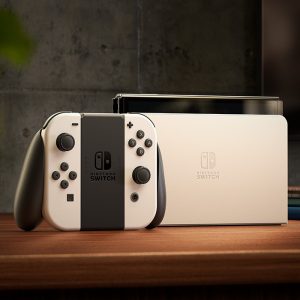
If you think about it, it is not an easy task to design a portable console. They have to combine an attractive image, good ergonomics, lightness and an adequate screen size to fully enjoy the game.
To summarize, we will tell you that all this has been achieved by both consoles.
The design in its most basic sense (buttons, screen, jostick) have many similarities in the two consoles. After all, they have to concentrate all the elements in the smallest space possible.
It must be remembered that the Nintendo Switch has the Joy-Con, which can be combined with the screen itself or with each other to make them an independent controller.
Of course, the Nintendo Switch Oled is lighter, almost two hundred grams less. Instead, the Steam Deck is slightly larger.
Processor and memory
The processor is one of the most important pieces of a device dedicated to video games. It is the heart of the machine, the point where all the information is processed and correct operation is defined.
In the table you will have seen that each console integrates a different processor, so you may be wondering. Which is better? Well, in terms of performance, the Steam Deck’s processor is a cut above the rest. This means that the Steam console can make a greater variety of games compared to the Nintendo.
The base storage that the two consoles bring is 64 GB, expandable with Micro SD cards. However, things are quite different if we refer to RAM memory.
The Steam Deck has a 16 GB RAM memory, values that could perfectly be those of a mid-high-end gamer PC. If we add to this the processor that we have mentioned before, we find that the Steam Deck has an enviable performance.
Screen
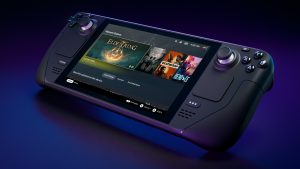
In this section the differences are minimal. The Steam Deck uses an IPS LCD screen, while the Nintendo Switch sports an OLED screen. The rest of the characteristics, if you look closely, are practically the same.
Both are 7” touch screens, with a 60Hz refresh rate and almost identical aspect ratio.
Which one looks better? It would not be fair to raise one over another. They are two fantastic screens that allow you to view the games with great quality.
Autonomy
Battery life is the icing on the cake that can make or break a portable console. We agree these devices have to use a lot of power to move the games with the necessary fluidity, which consumes energy, but it also has to offer a long space of use.
In this sense, the Nintendo Switch moves between 4.5 and 9 hours of continuous use. Everything will depend on the resources that the video game consumes or on other values such as the volume or the level of graphics.
The Steam Deck falls short in terms of autonomy.
By the way, both consoles use a USB-C cable as a charging interface.
Sensors and speakers
The Nintendo Switch OLED has more sensors than the Steam Deck, although at first it is not decisive. The Nintendo concept incorporates more dynamic games or where the movement of the console is key.
The sound on both consoles is correct, quality stereo speakers. Of course, nothing like using headphones to get a more complete feeling of immersion. It is an almost obligatory accessory if you consider yourself a real gamer.
Connectivity, catalog…
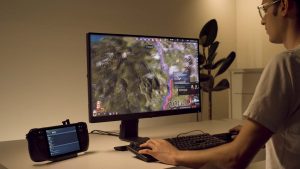
If after all you have seen you still have doubts, it may help you to know what games you can play with each portable console.
The Nintendo Switch has a broader catalog of games, however you have to take into account the more arcade style that surrounds the Nintendo universe. You may be drawn to the larger number of titles available to you and be disappointed by the prevailing style.
Instead, the Steam Deck offers fewer titles, but includes a greater variety of genres, closer to what an Xbox, Playstation or PC could offer you.
Finally, both the Steam Deck and the Nintendo Switch OLED have Wi-Fi and bluetooth connectivity.
What portable console do we recommend?
After analyzing the main characteristics of each model, we can now give a well-founded opinion about these two wonderful consoles.
Between the two options we are left with the Steam Deck. Why? Mainly because of its processor and its larger RAM memory. It is true that it falters a bit in autonomy, but it is understandable if we look at its specifications.
In addition, although it has a smaller catalog of games, the variety of them adds a lot of value.

